Just west of Denver, but a world away both weather-wise and population-wise, lies Clear Creek County. Up in the mountains, the air is clearer, the temperatures are cooler, and we can’t breathe. Like, at all. This is the beginning of a long’ish period of living at 8,500 feet altitude (or higher), and I wonder if we are really cut out for these Rocky Mountain Highs.
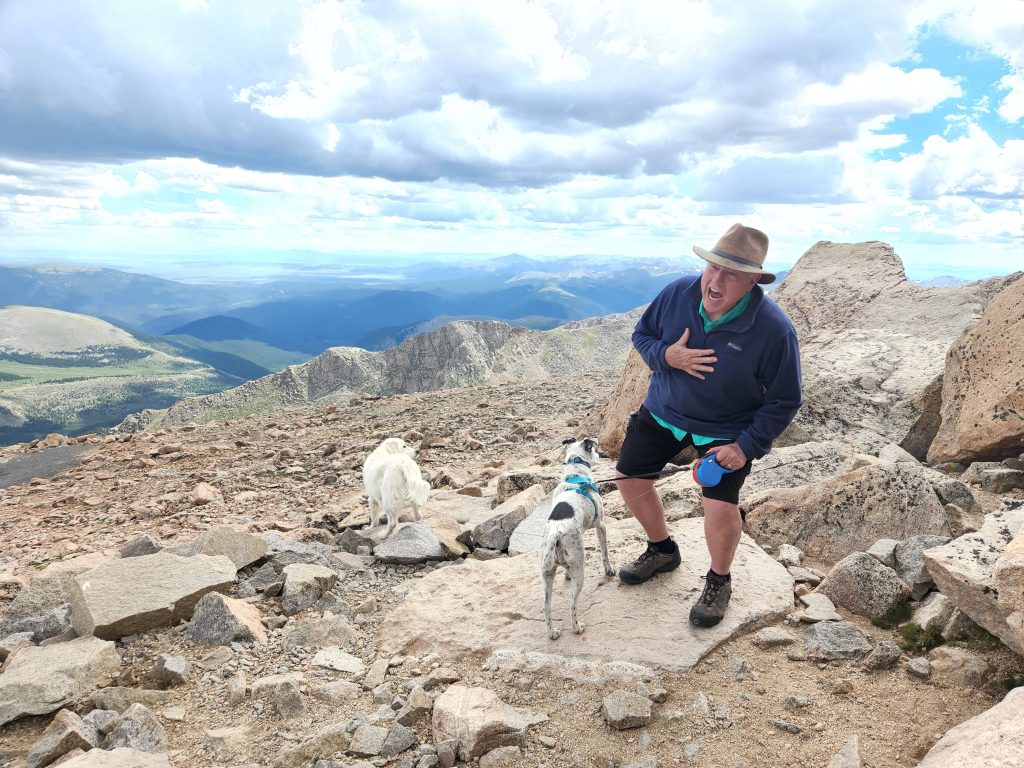
The tiny towns of Clear Creek County are dotted along and to the direct left or right of I-70 winding through the mountains, and are among some of Colorado’s most charming.
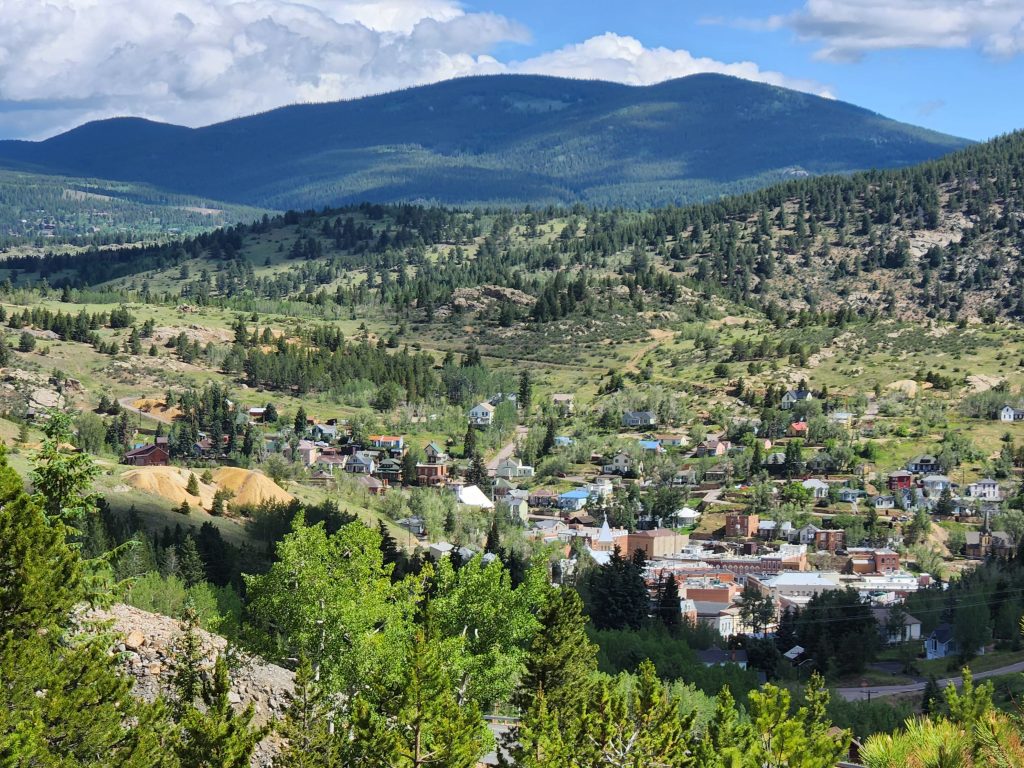
Many of these towns were founded as gold (or silver, or lead) rush mining boom towns. Some have stood the test of time and maintained vintage charm, and some not so much.

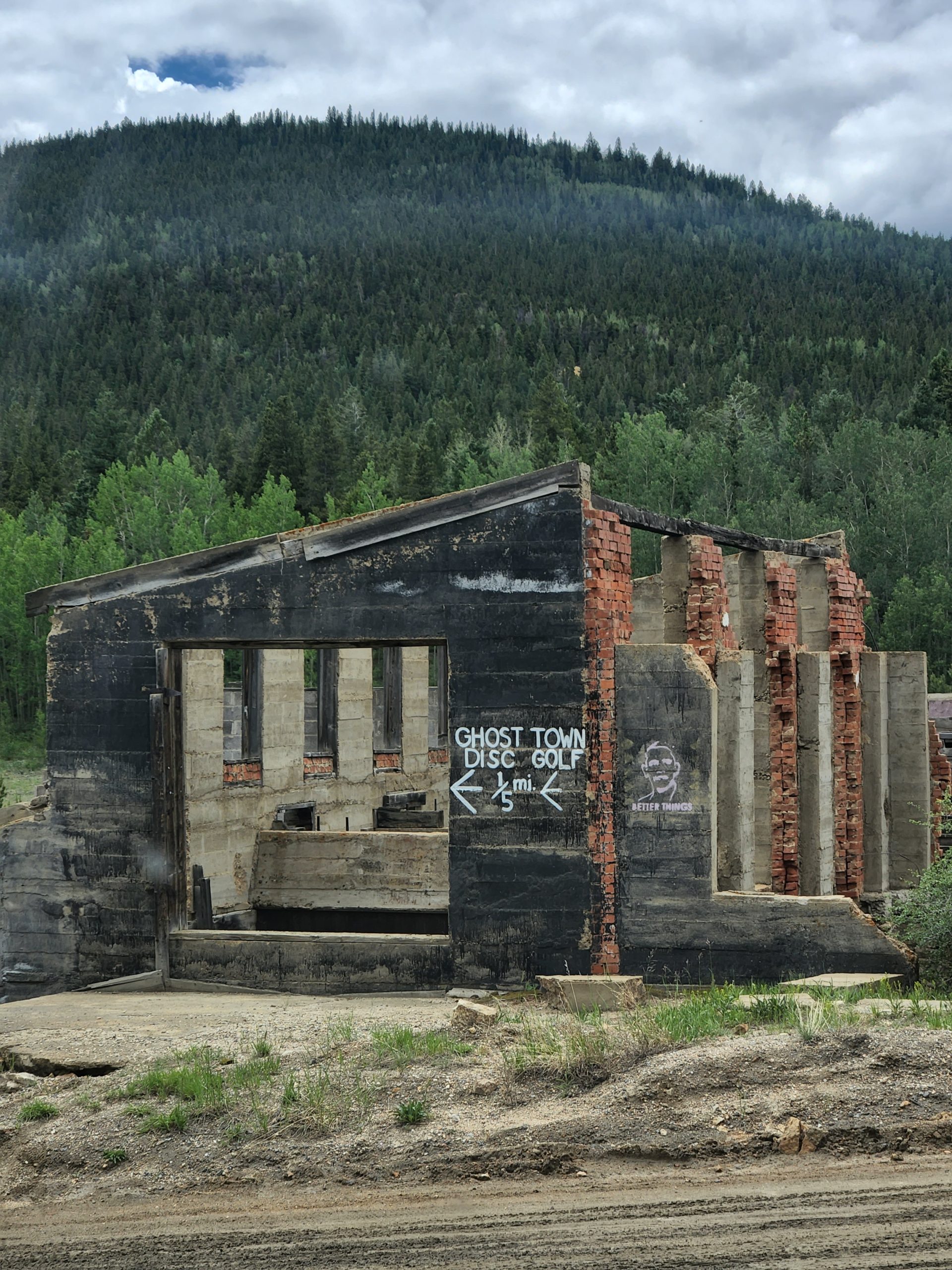
Idaho Springs is the largest and was a fully functioning mining town until the 1900s, when it successfully transitioned to tourist destination. Not all towns were so lucky.

Georgetown is another adorably preserved town, and here we took an old-time steam train (no coal in our eyes!) to the remains of several gold and silver mines. The Georgetown Loop Railroad is an out-and-back trip, so why is it called a loop? The reason lies in the steep grade of this area. In order to make it up the mountain, the designers made the tracks and trestles in a series of “corkscrew” loops, a spectacular feat for 1884.

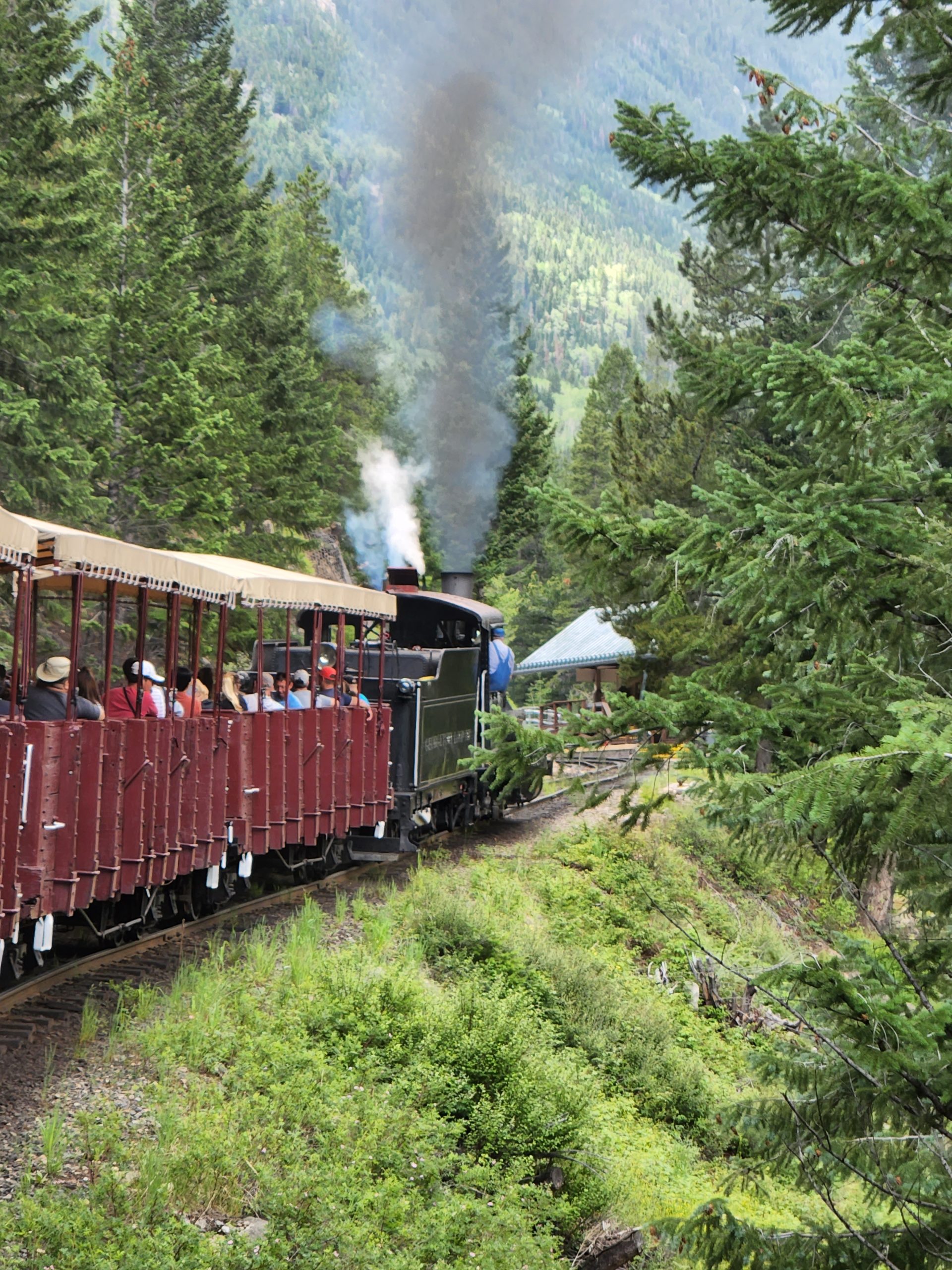
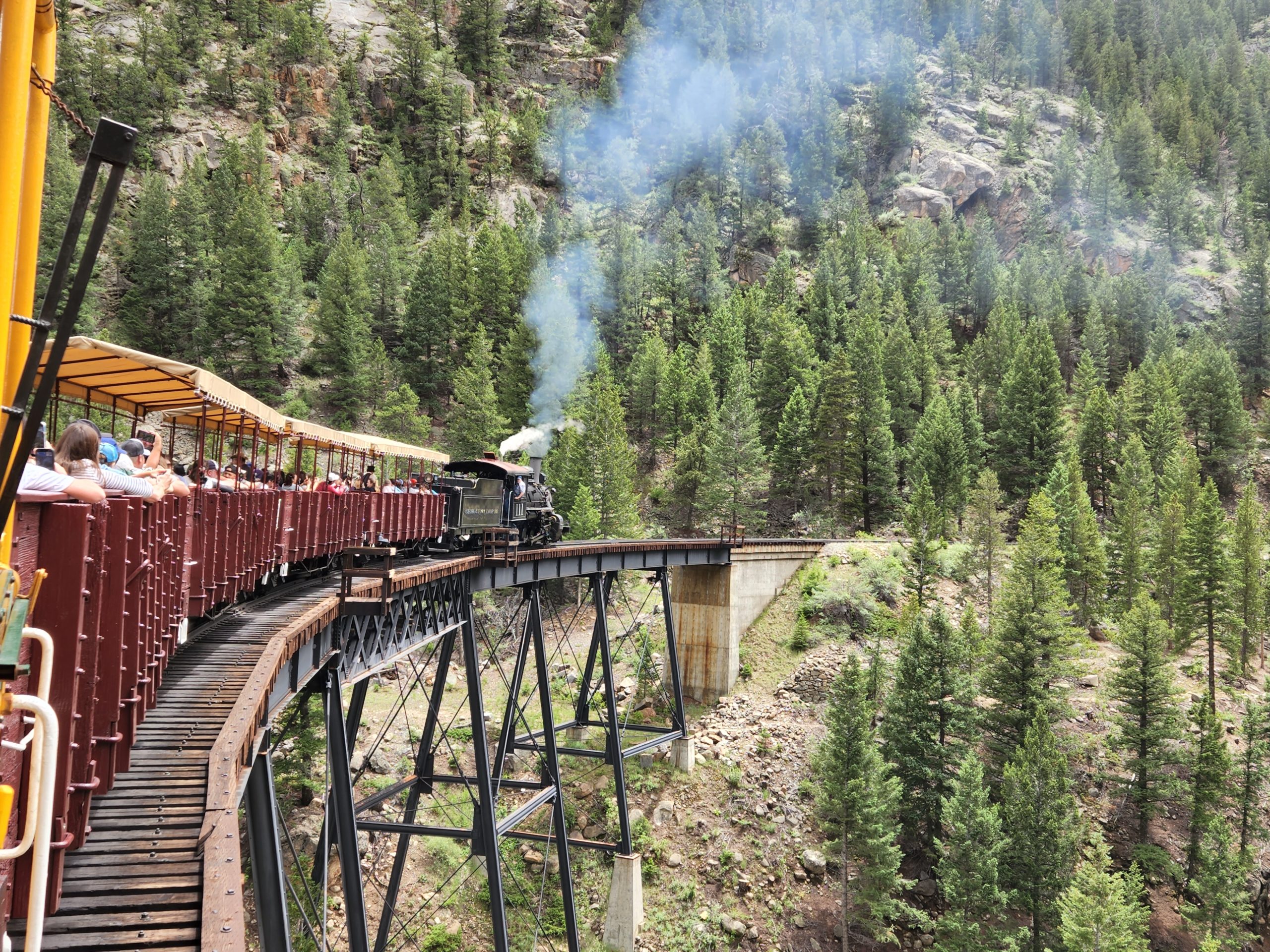

As an optional part of the train ride, you can venture down into one of the old mines in this area (or pan for gold, or other mining-related activities). After this summer’s trip and our extensive mining education, we should be able to give any guided tour ourselves.

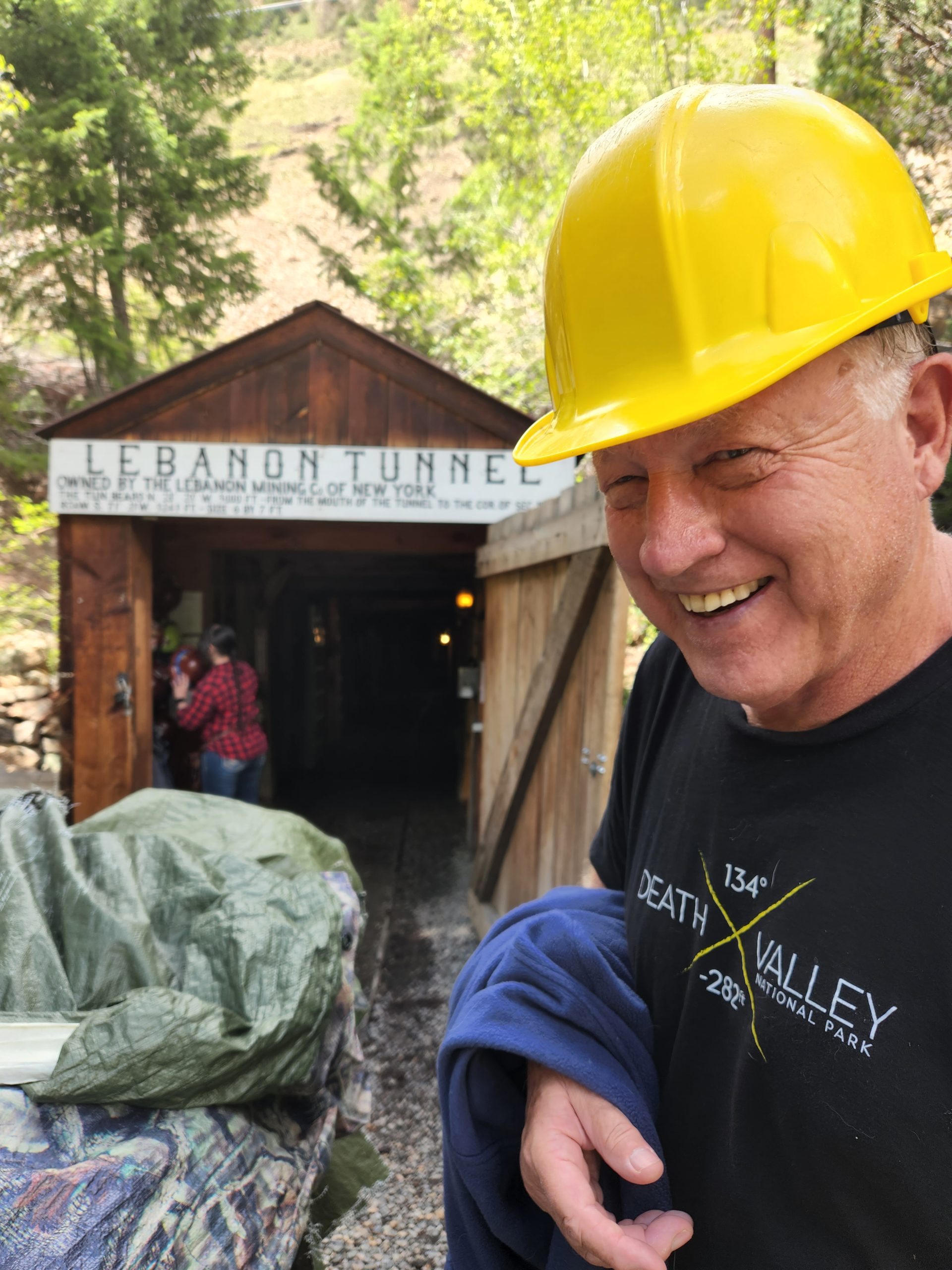
The mines in this area were primarily established by the Cornish who emigrated here from Cornwall, England. Virtually all kids over age 10 worked full-time in the mines. They had a number of superstitions, primarily that singing or whistling in the mines, would summons the “tommyknockers,” or ghosts in the tunnels.
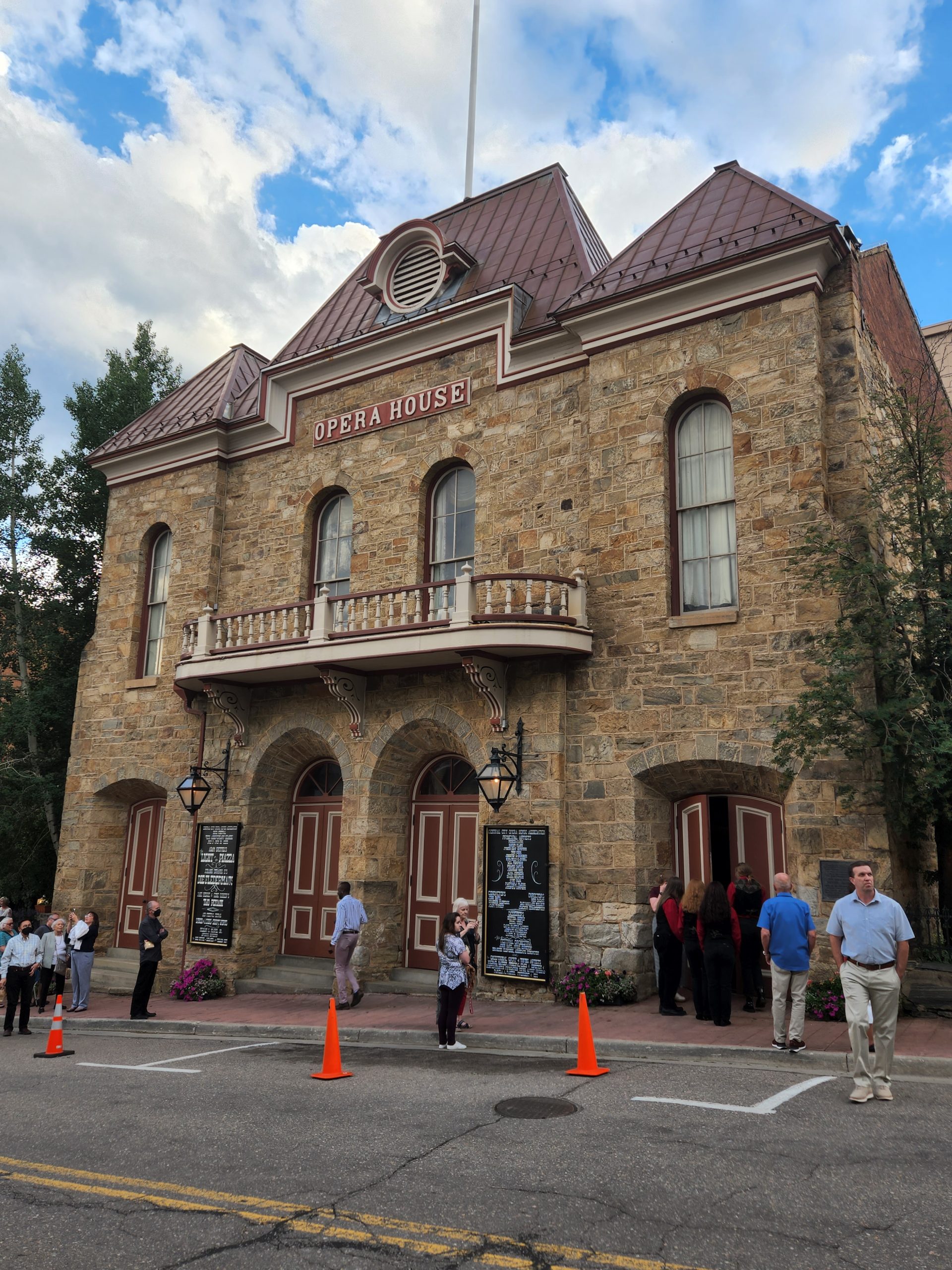
Being music lovers, they built the above-ground, and therefore safe, Central City Opera House in 1878, a small-but-grand theater that still draws performance lovers every summer season. A full, live orchestra performs from beneath the stage. And the performers? They have to sing, or play the bassoon, or whatever, at this elevation almost two miles above sea level. We can barely speak. How in the world can they sing two hours of opera in this thin air?
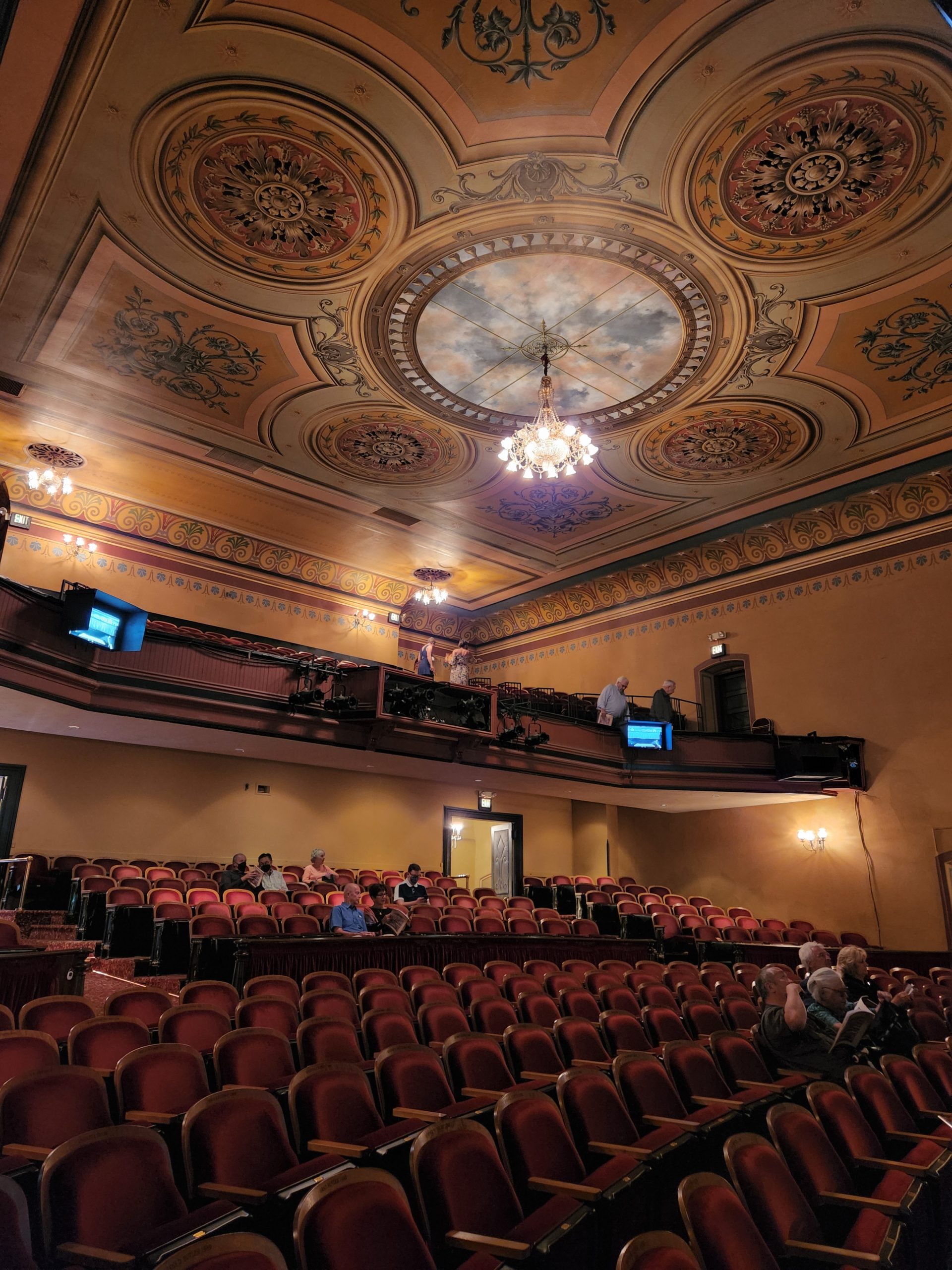
We saw The Light in the Piazza, which thankfully for us is one of the lighter, less opera-y type of operas, and a romantic story to boot. One of the most entertaining parts of the show happened in the street beforehand. The theater ushers, generally professional opera interns and therefore talented singers, burst out of an alley and into robust song as they marched to open the front door of the theater.
- Well, what do you know, here we go / we’re off to start the show.
- You’ll know who we are from afar; /frankly we sing better than the star.
- We’re the ushers, who show to your seat / then nonchalantly, we step upon your feet.
- You may have bought a ticket / for Row A and seat 3.
- But when we’re through with you / you’ll find you’re in the balcony.
- We’re the ushers who heed your beck and call / yet when you need us, we’re never there at all.
- Our flashlights never working to show the pitfalls lurking / We’re the ushers of the Central City show!
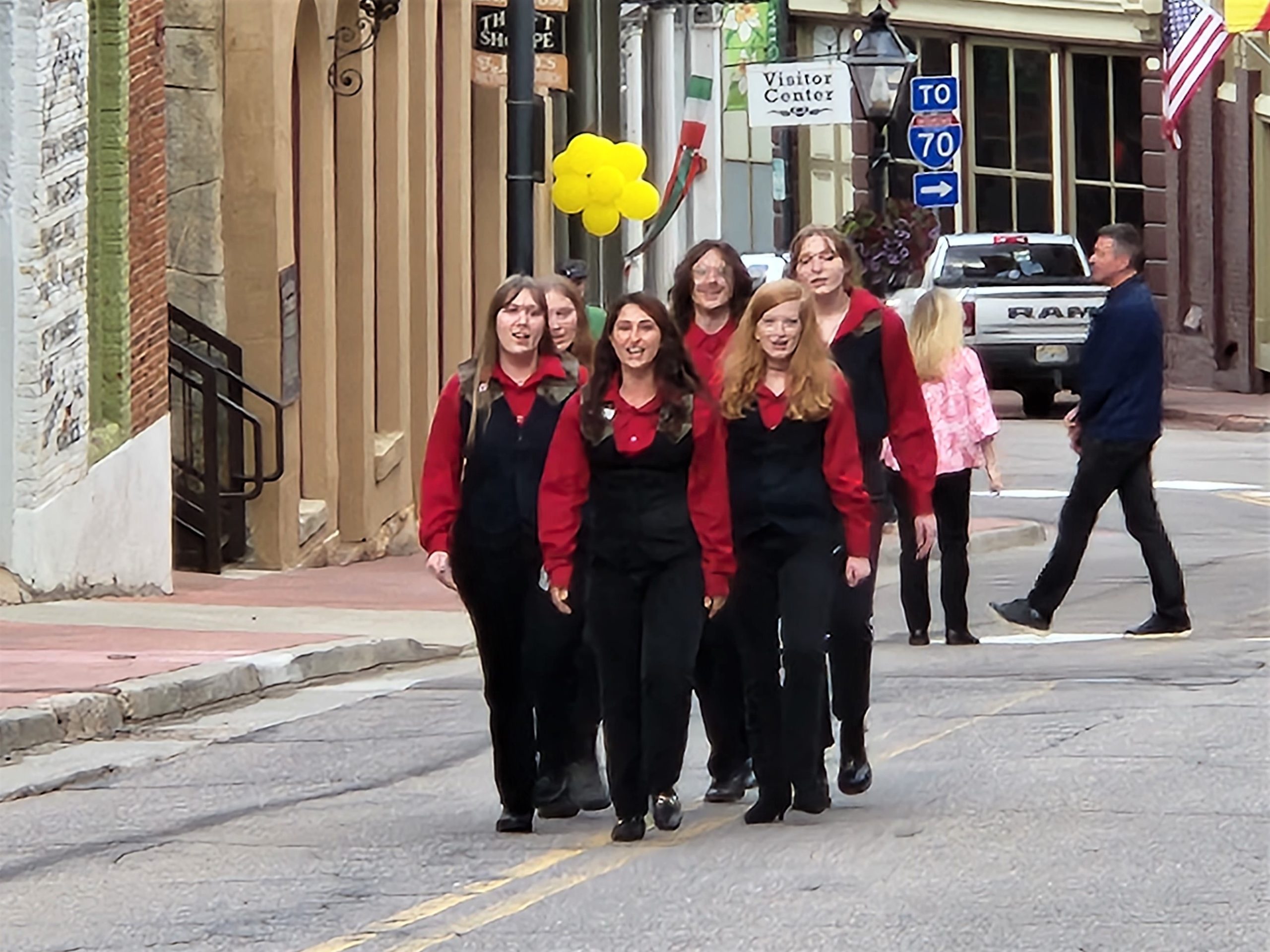
Central City and nearby Black Hawk, though gorgeous, were actually pretty sad. The primary/only industry here today (casinos … lots and lots of casinos) was hit hard by Covid closures, and has never bounced back. We were told that this county was #1 in the nation for negative financial impact of covid. Storefront after storefront, empty. Streets, mostly deserted. Something you hate to see.
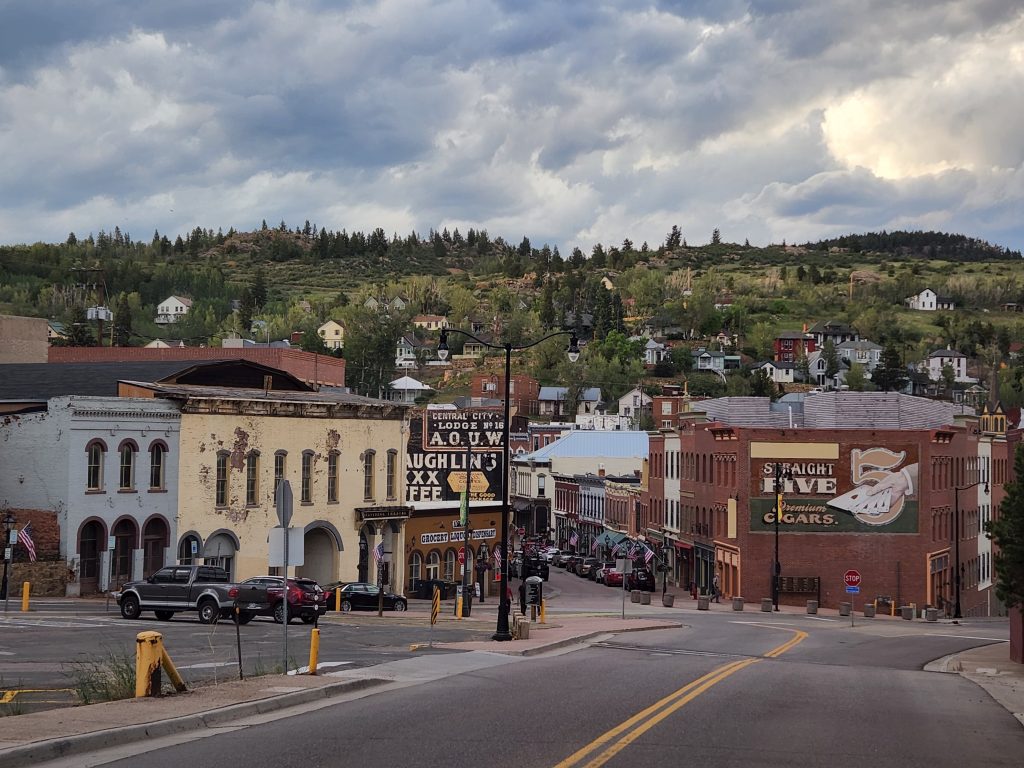
Perhaps our most breath-taking day … literally … was a must-do drive up to the top of Mount Evans, the highest paved road in North America, and the 5th highest paved road in the world.
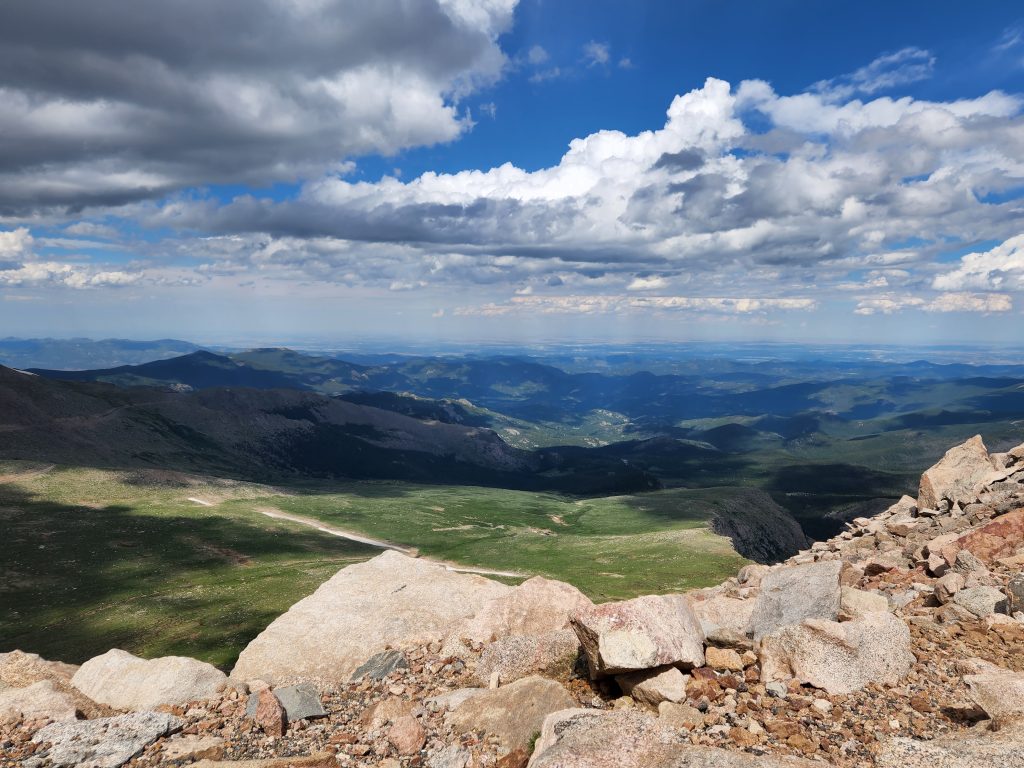
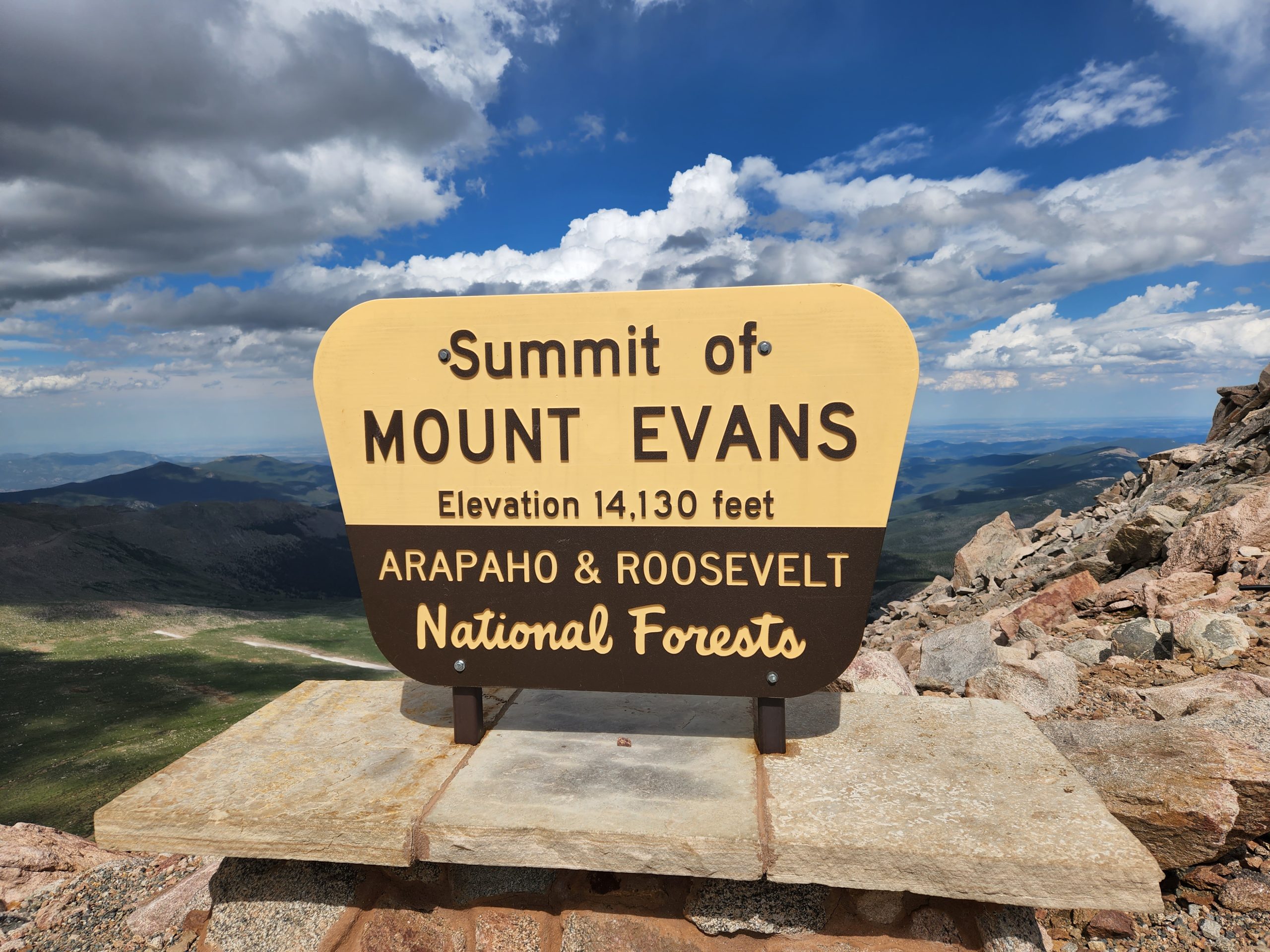

This road climbs 7,000 feet in just 28 miles, with “top-of-the-world views” (see what I did there?) of alpine lakes and the Continental Divide. It’s also pretty freakin’ stomach-clenching driving, with few guardrails, steep turns, and extremely narrow roads, especially at the top!


Along the drive, Summit Lake in the highest park in the Denver Mountain Park system. It has permafrost (permanently frozen ground) and rare plants usually only found above the Arctic Circle!
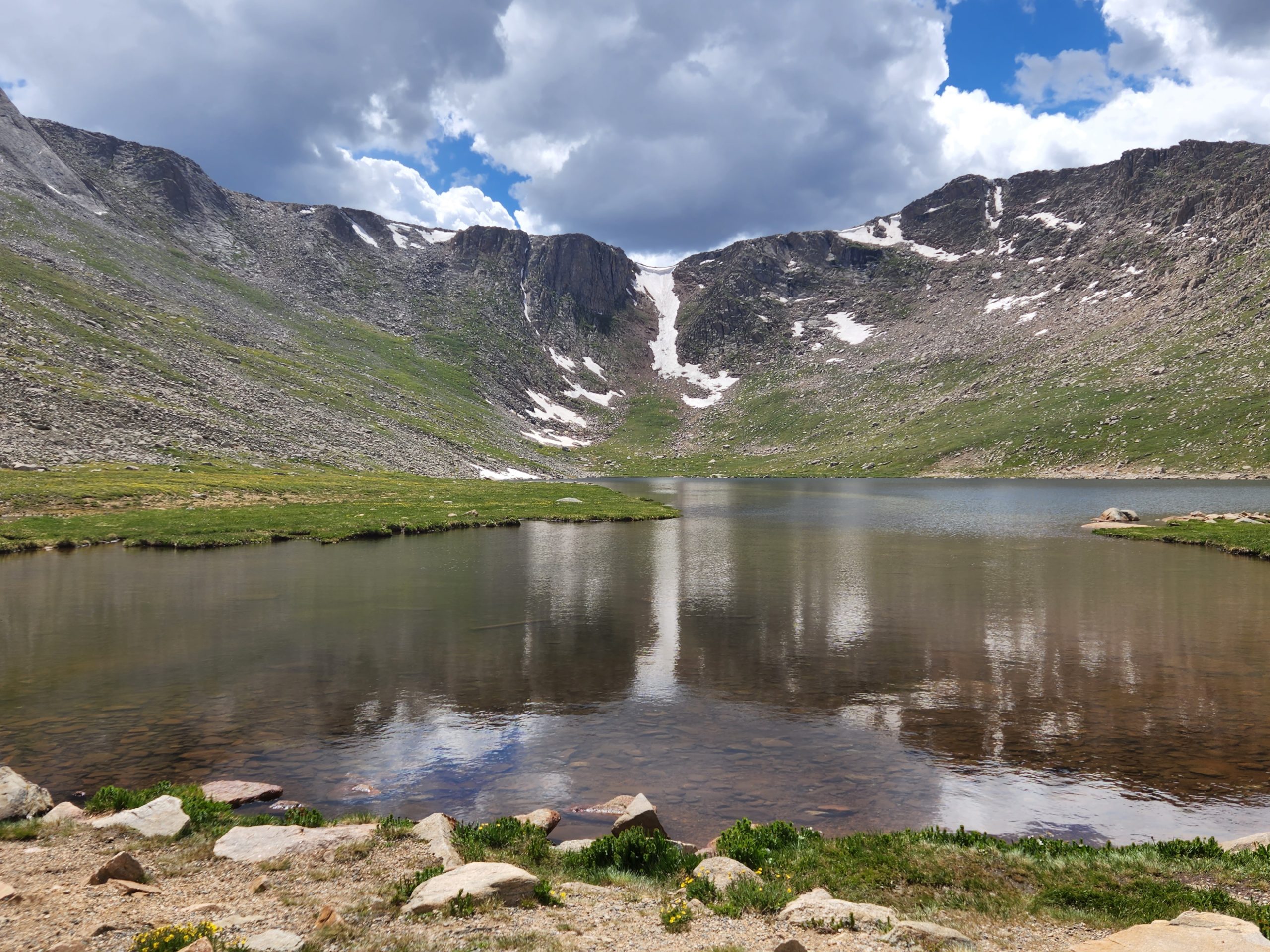
Along the way, you’ll run into (… pun intended …) gorgeous bighorn sheep and mountain goats and their adorable offspring … best be ready for slow-moving traffic jams!
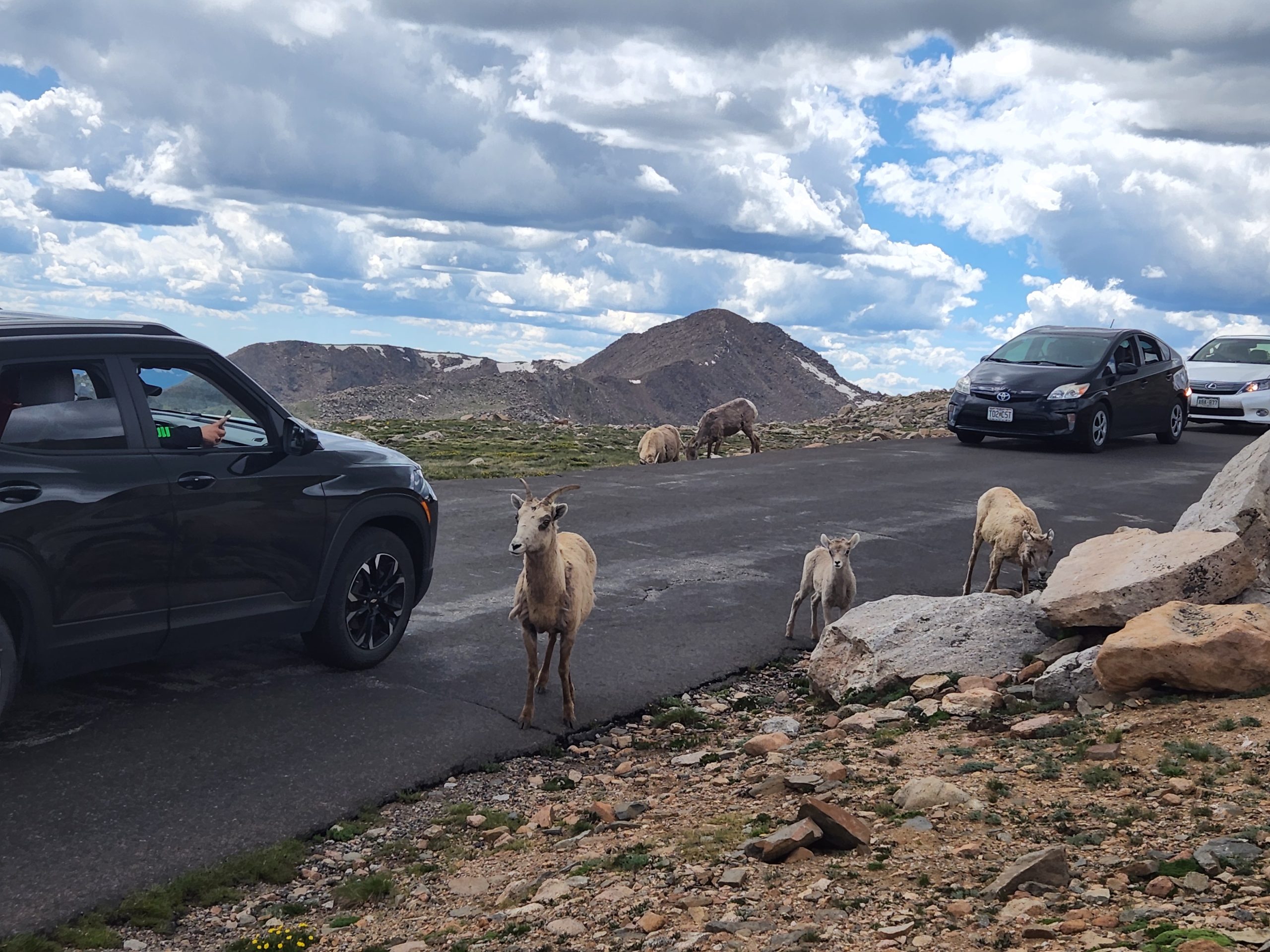
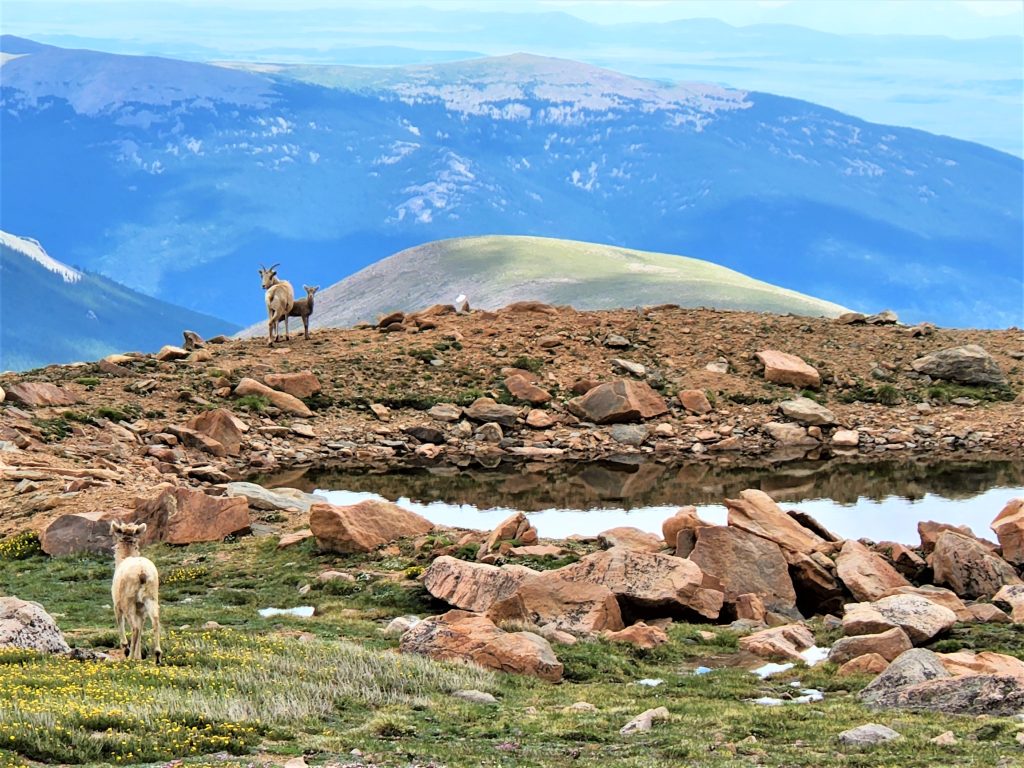
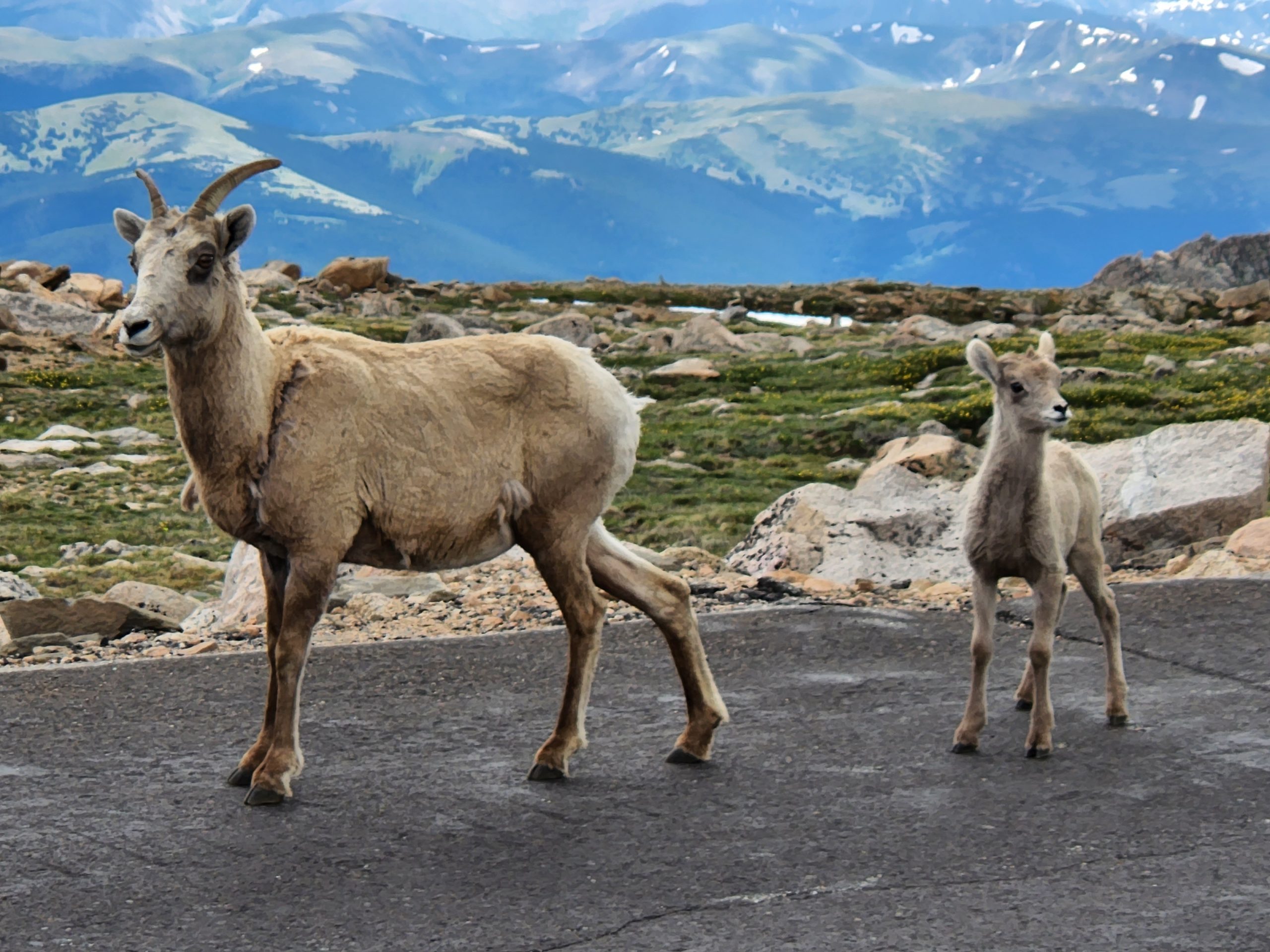
At the summit of Mount Evans, a whopping 14,130 elevation, you’ll find the ruins of the Crest House restaurant, which burned down in 1979, and well as the highest astronomical observatory in North America.
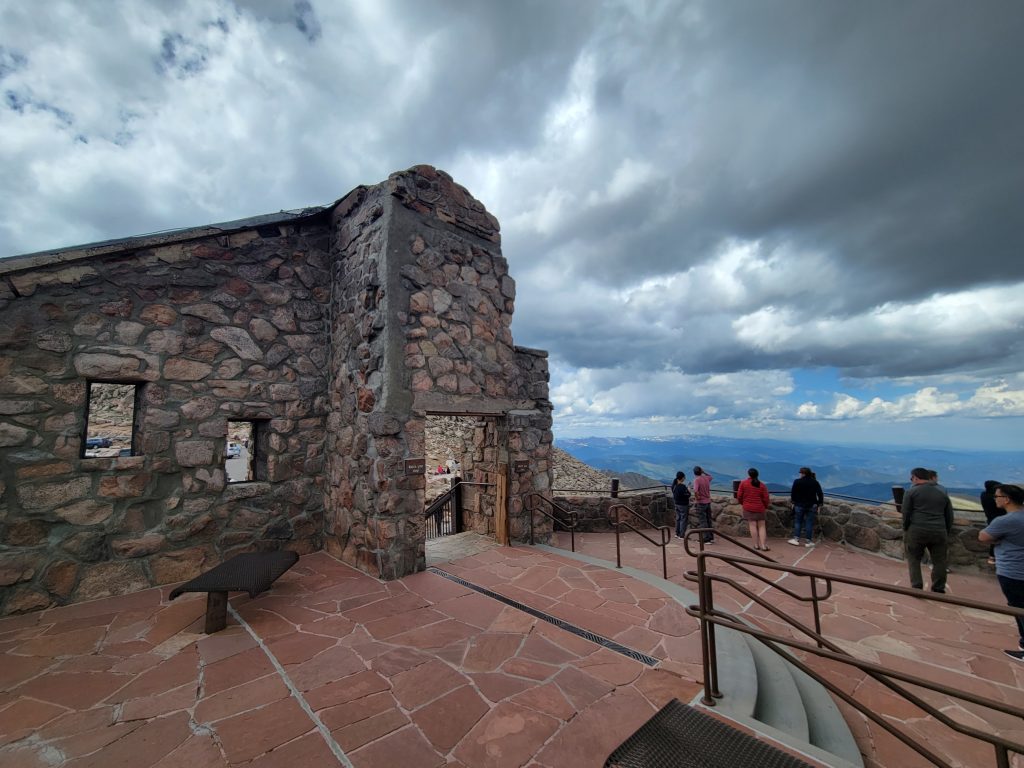
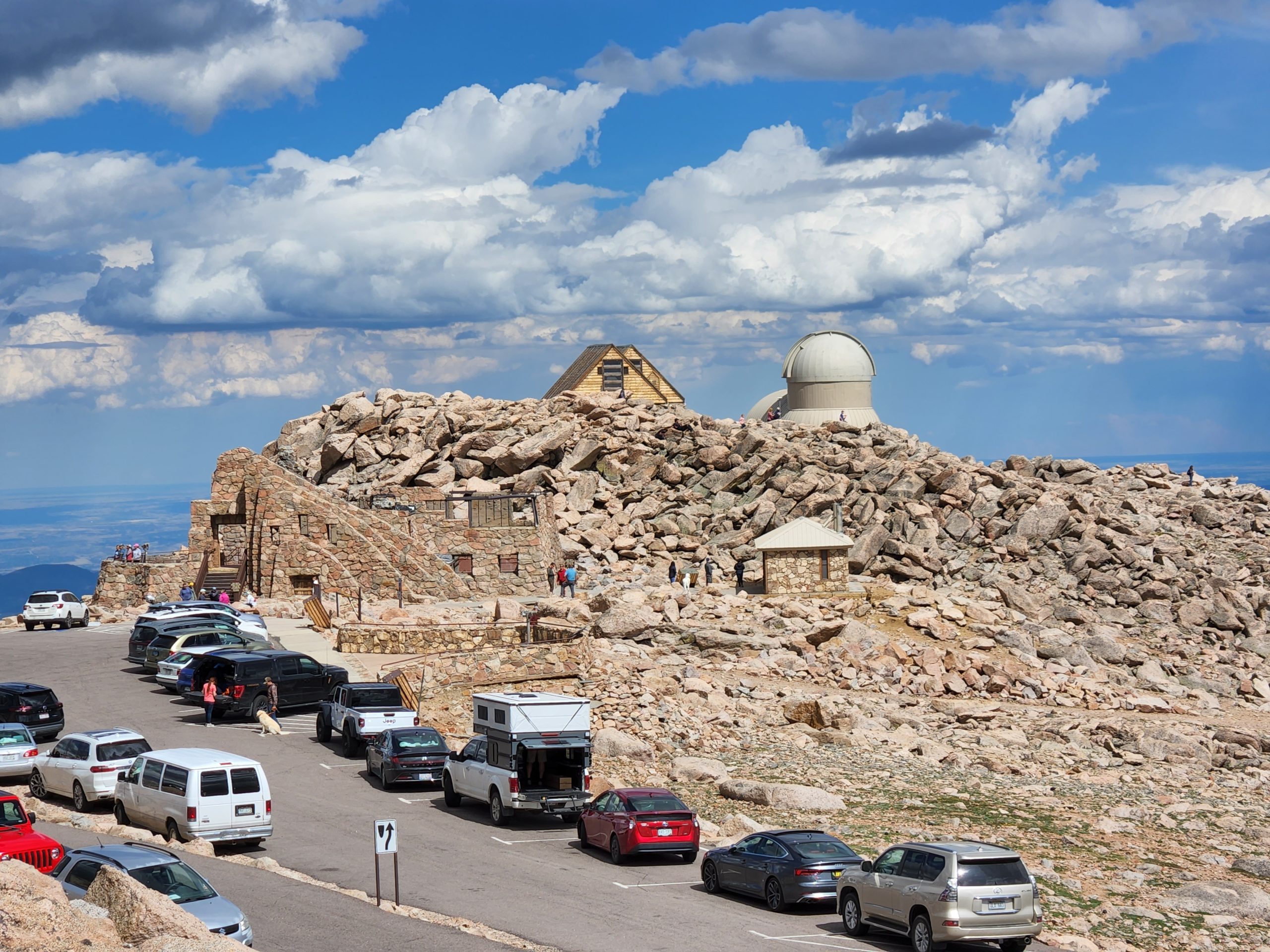
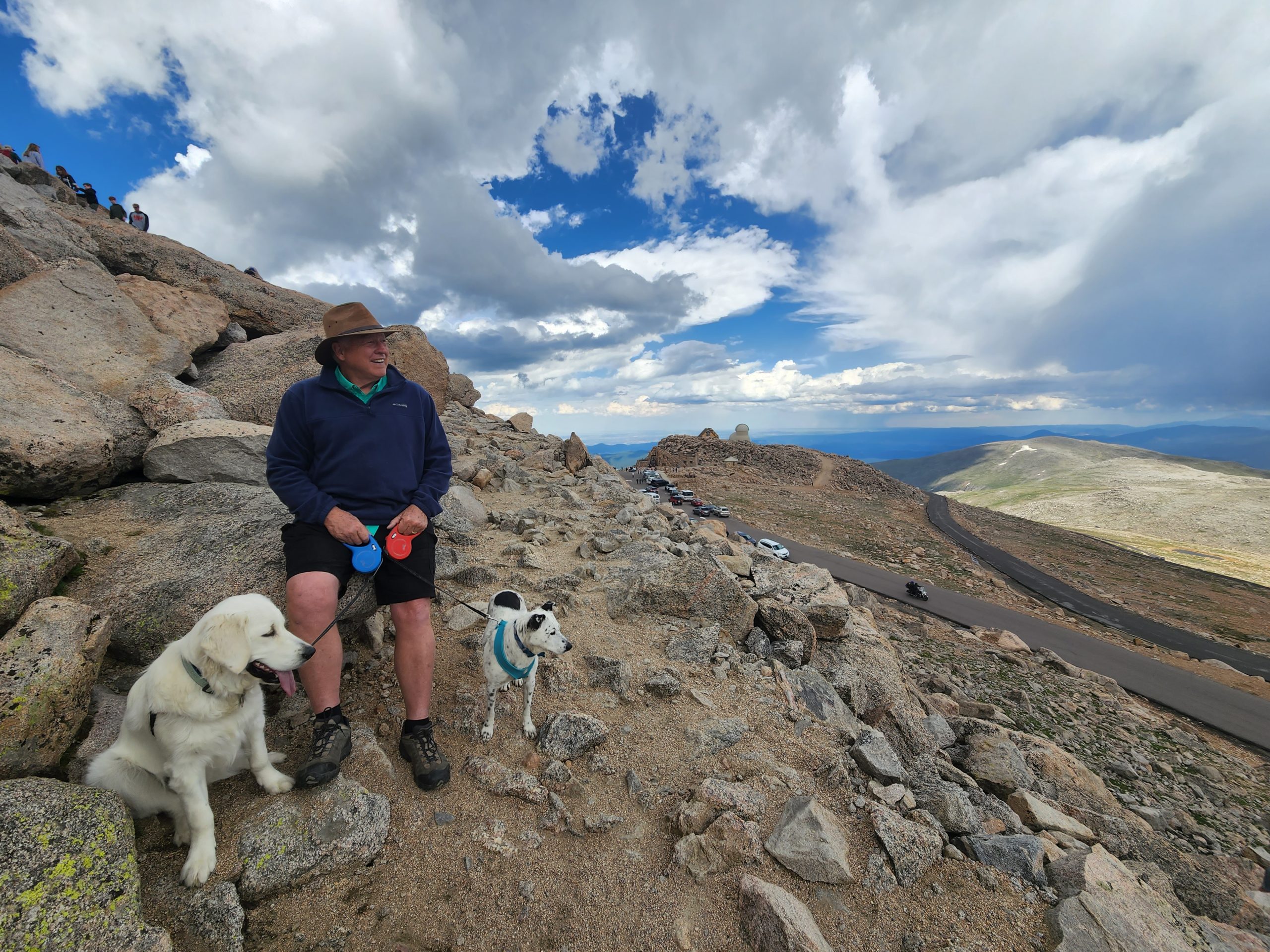
Here, up high on the alpine tundra, wintry conditions still exist, even in mid-July. Finn got her first taste of snow (quite literally … she ate it, lots of it), even though we feared possibly losing our new pet in whiteout conditions … white dog in the white snow, that is!


Alas, we did not escape this area without some trauma. While driving the RV to the campground, we were directed to drive through a chip-seal zone that had not properly cured. The RV, and Jeep we were towing, were both splattered with gross, oily tar that soon hardened to rock. Grrrrrrr! But, such are the (literal) hazards of our life on the road. One furious phone call to the chip-seal company, and they agreed to send us $1,000 to help pay for detailing to remove it from both vehicles at some point.
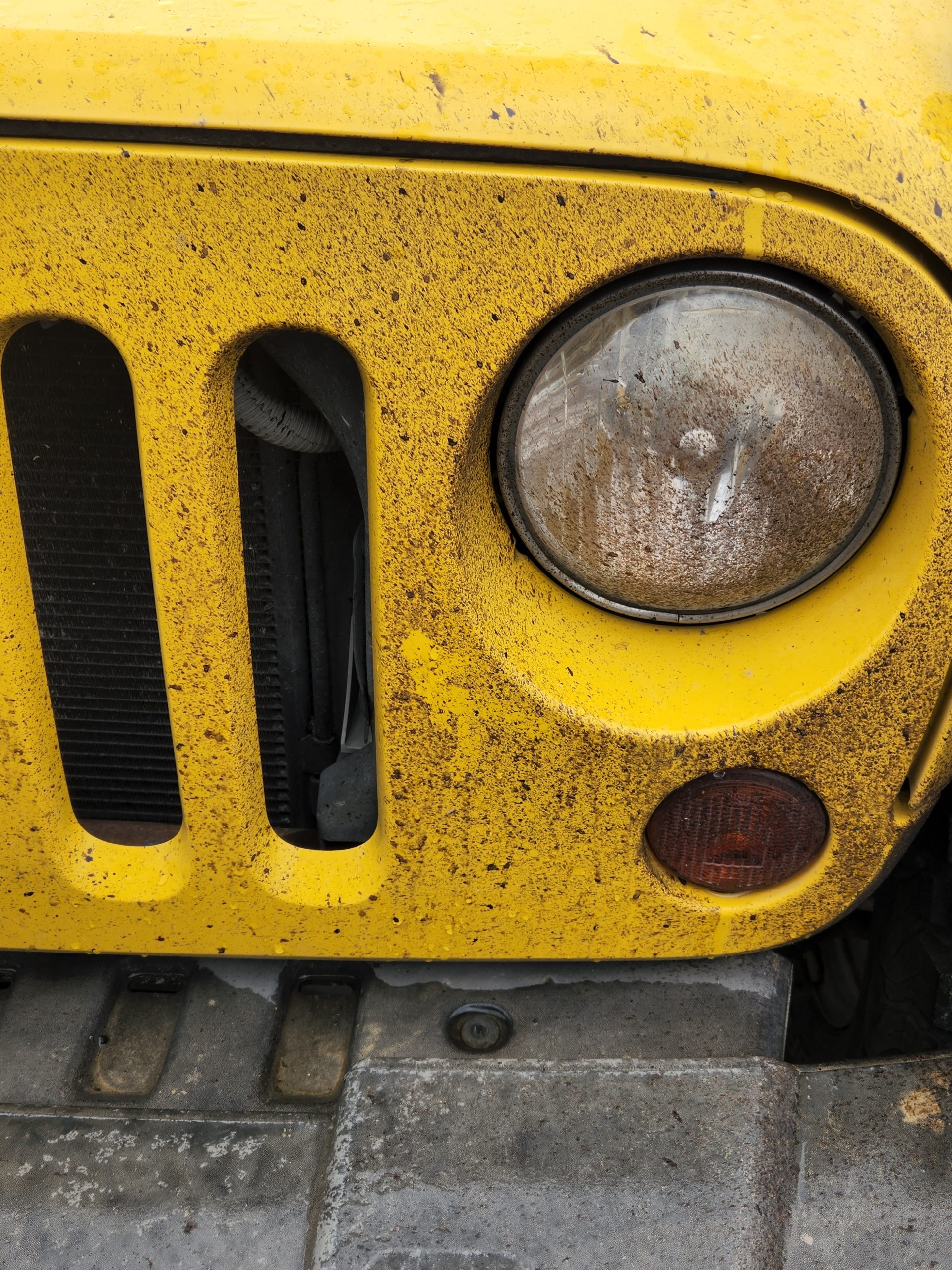
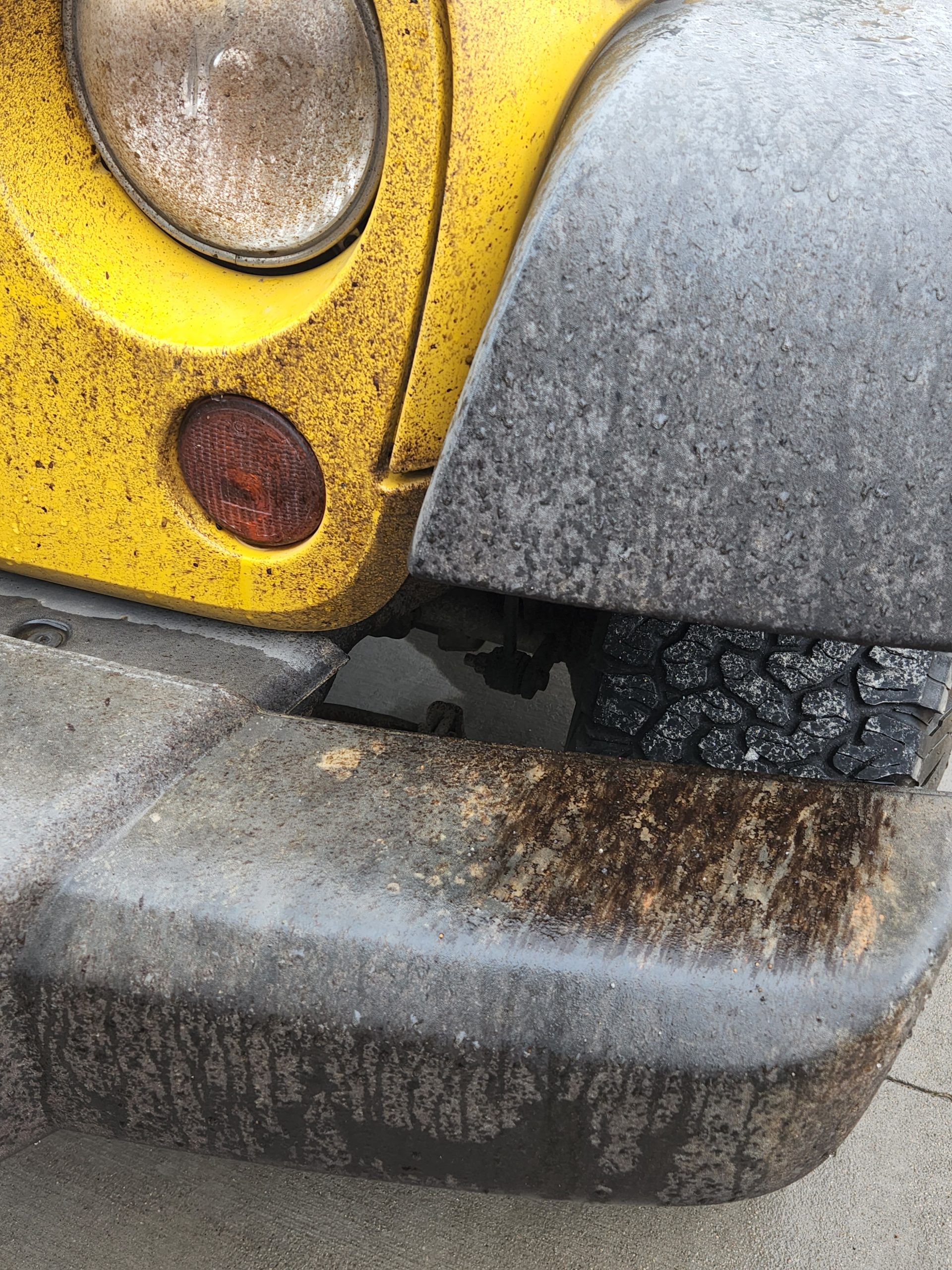
Lastly, yet another addition to the “crazy things we see on the road.” Philip flashed him, and though I’m not sure that was what the driver had in mind, he still gave a honk. Yesssss! My husband’s still got it goin’ on!! (My always-funny friend Tom Racine quipped, “I honk for properly spelled messages. It’s one more “E,” man…couldn’t you afford it?”)
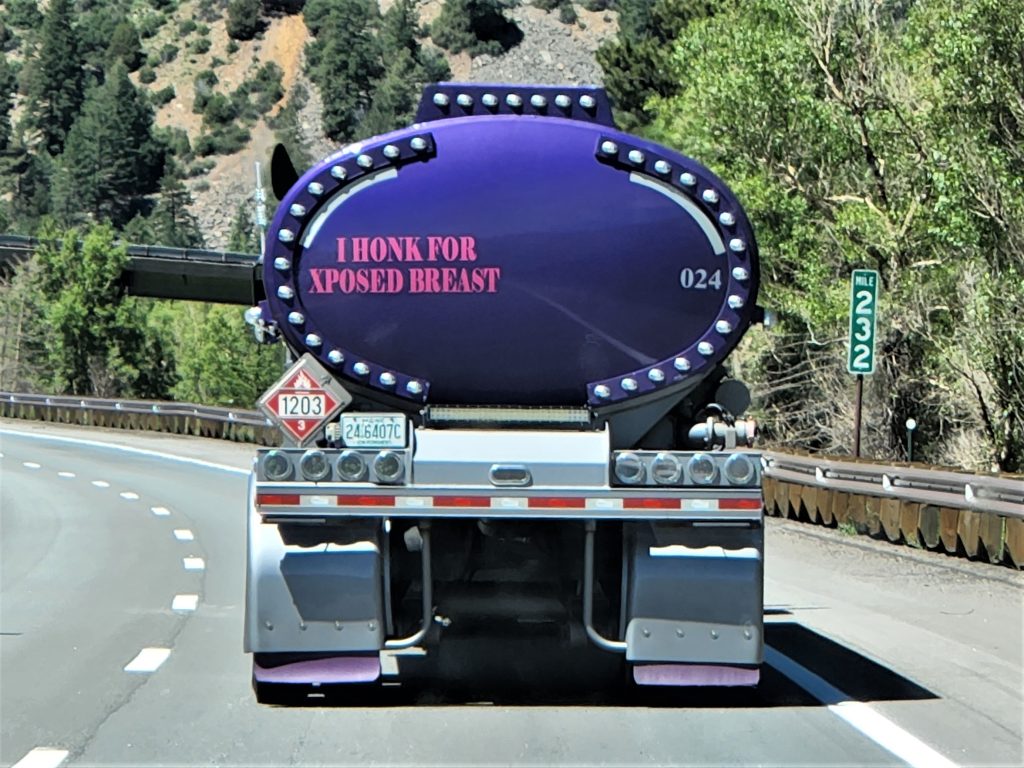
As if this altitude wasn’t enough, next we’re moving on to an even higher altitude … the highest incorporated city in the entire country, in fact … Leadville, Colorado, at 10,200 feet. See you up there … way, way UP!
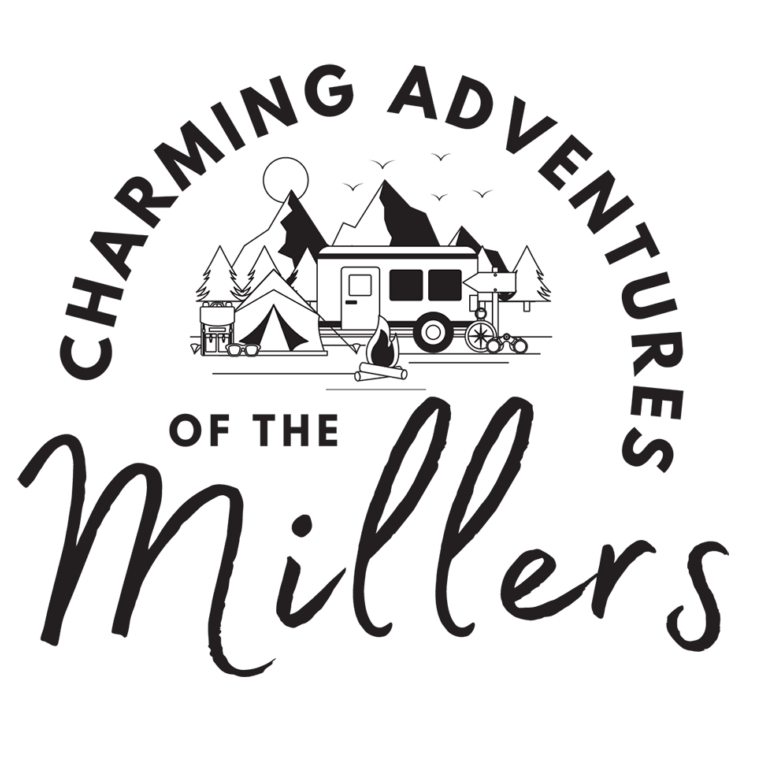

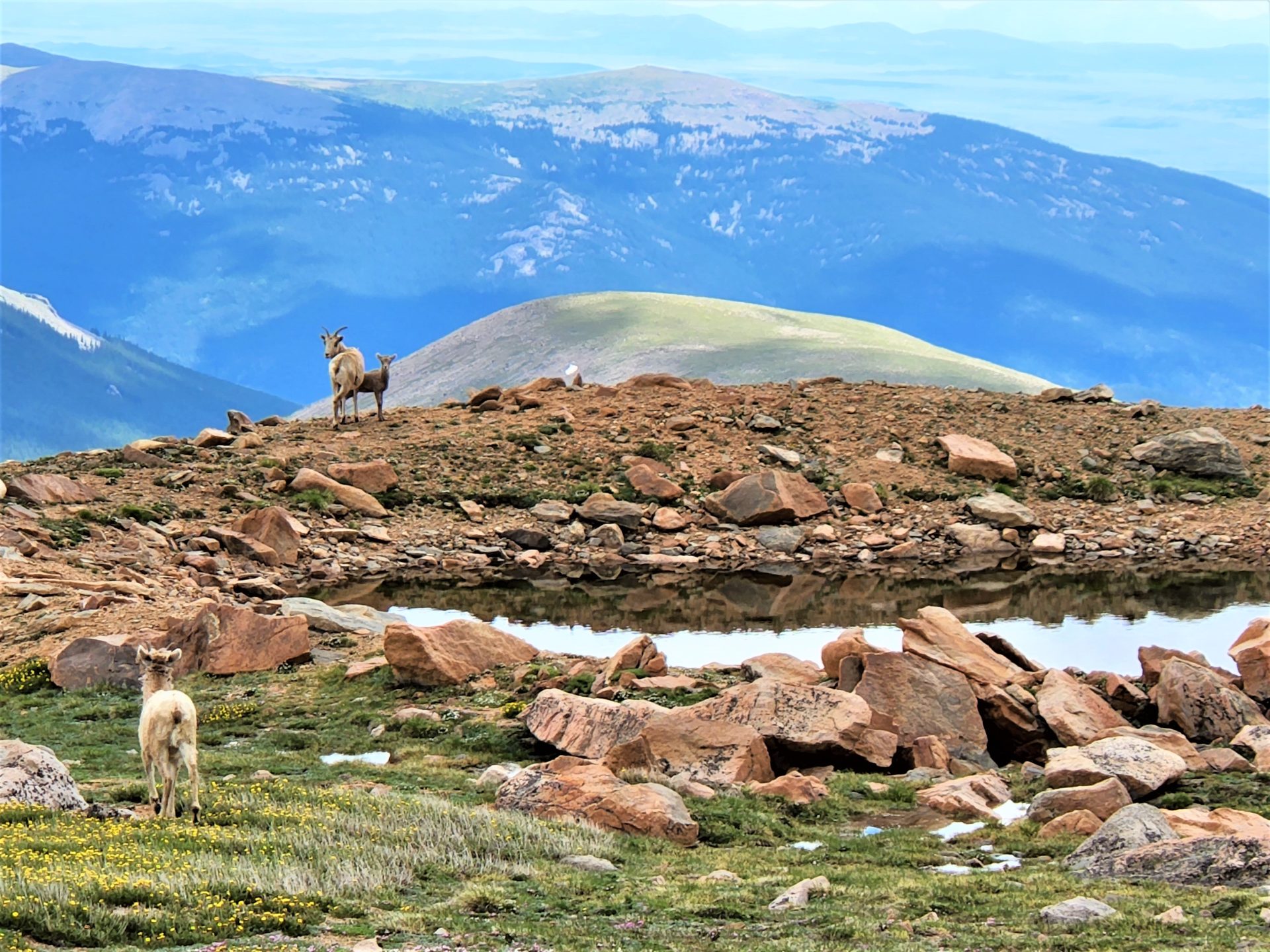
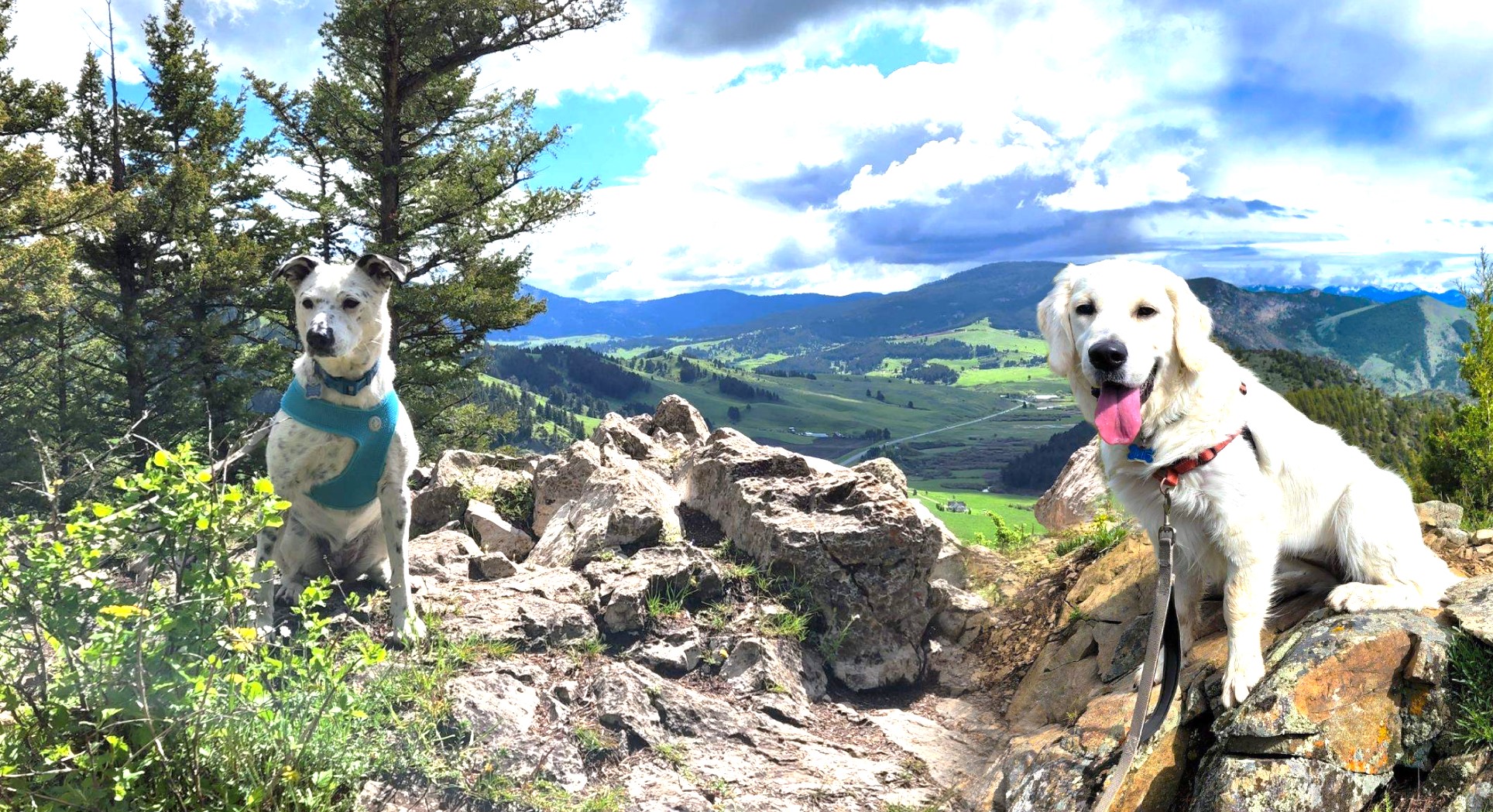
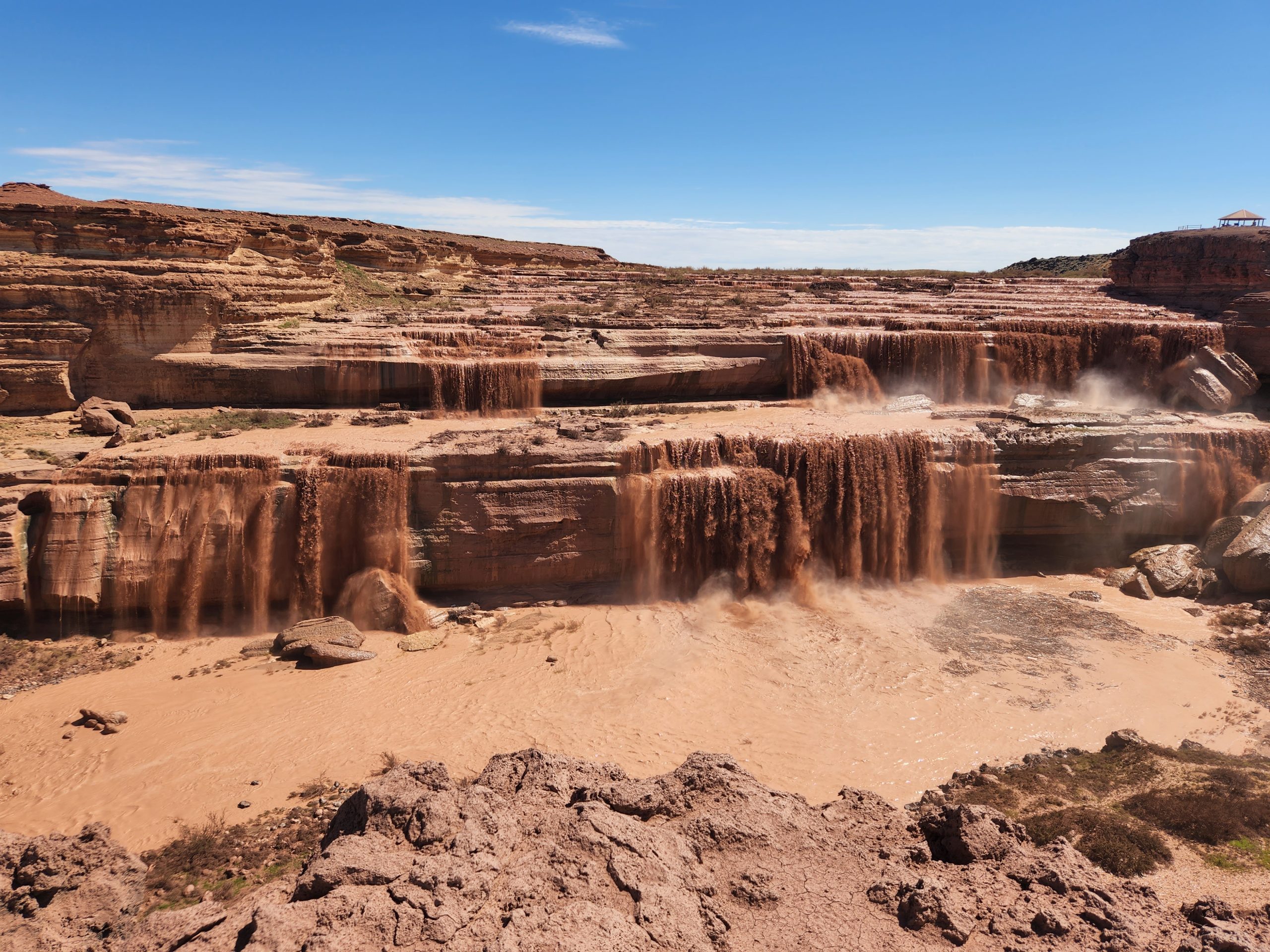
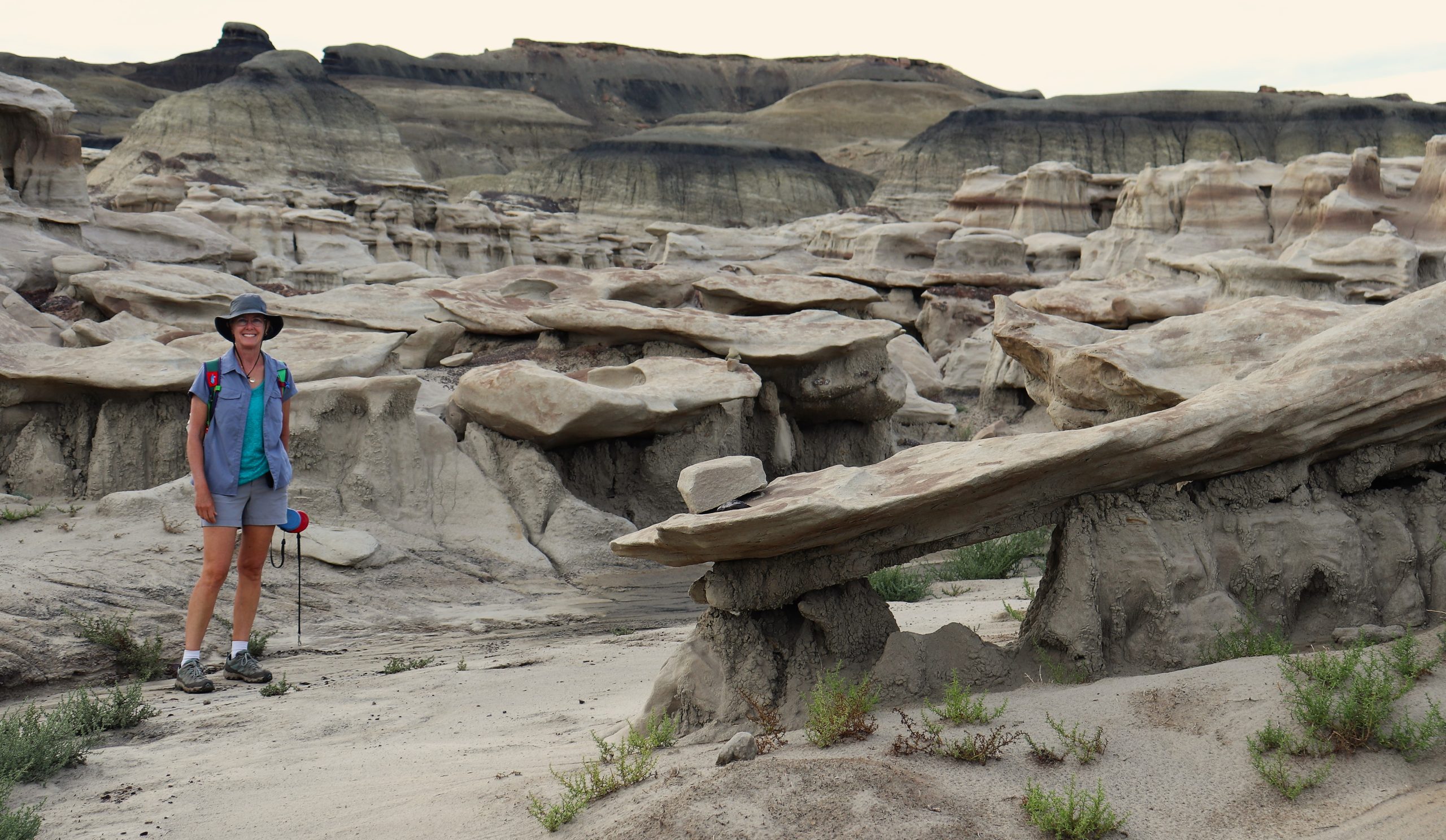
Tessa, I truly enjoyed my vicarious visit to the top of Mount Evans with you. However, based on your frighteningly vivid description of the road, I permanently crossed it off any current or future travel lists without further ado. I don’t care how many adorable baby mountain goats and sheep you try to bribe me with. Not. Gonna. Happen.
Ha ha ha! Mary!!! Be brave! Let’s do it together. I’ll drive with one hand and hold your hand with the other. It’ll be a thrill!!!